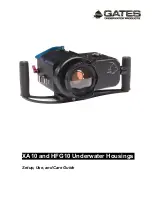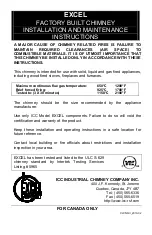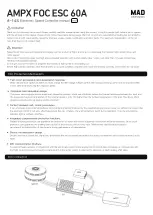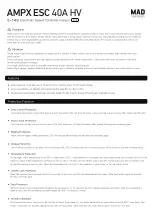
AN-MPU-x000A-01
Document Number: AN-MPU-x000A-01
Page 6 of 14
Revision: 1.1
Date: 06/12 /2015
3.3.
ELECTRIC CURRENT NOISE
Magnetic fields can be created by both AC and DC electrical current, or by changes in the electric field. Electromagnetic noise will be
picked up by the magnetic sensor as noise on the magnetic field. The magnetic sensor should be located away from the source or
traces containing current fluctuations as detailed in Table 4.1.
Current Fluctuation
[mA]
Recommended Distance* from Trace
[mm]
2
0.2
10
1
50
5
100
10
200
20
(*) distance where fluctuation of magnetic field is below +/- 2µT
Table 4.1: Recommend Distance from Fluctuating Current Traces
3.4.
HEADING CALCULATION FOR COMPASS APPLICATIONS
A simple calculation of the earth’s magnetic field can be obtained by calculating the angle of the X and Y axis magnetic fields as
sensed by the magnetometer:
𝐻𝑒𝑎𝑑𝑖𝑛𝑔 𝐴𝑛𝑔𝑙𝑒 = atan 2(𝑌, 𝑋)
.
For applications which require an accurate heading angle, this approach is not sufficient. Using this simplified method, the heading
angle is highly dependent on the orientation of the MotionTracking Device. As the Earth’s magnetic field is sensed as a 3-
dimensional vector, the simplified calculation is only accurate when the earth field vector is aligned with the magnetometer’s XY
plane. This is not typically the case, as the earth field has a significant magnetic inclination (or magnetic dip), which is geographically
dependent. For example, within the Continental United States, this inclination angle can vary between 55 and 75 degrees. Because
of the high inclination angle, the heading output will be extremely sensitive to small changes in pitch and roll when rotating the
device on a flat plane.
A much more accurate calculation includes rotating the sensed magnetic field to a horizontal plane prior to computing the heading
angle. For static measurements (when the device is stationary), an accelerometer reading is sufficient to estimate roll and pitch,
while during dynamic movements, the orientation output of Motion Fusion is recommended.
Quaternion rotation may be applied to the magnetometer data, or calculation using Euler roll / pitch angles, using the following
example:
𝑋
′
= 𝑋 ∗ cos(𝑝𝑖𝑡𝑐ℎ) + 𝑌 ∗ sin(𝑟𝑜𝑙𝑙) ∗ sin(𝑝𝑖𝑡𝑐ℎ) − 𝑍 ∗ cos(𝑟𝑜𝑙𝑙) ∗ sin (𝑝𝑖𝑡𝑐ℎ)
𝑌
′
= 𝑌 ∗ cos(𝑟𝑜𝑙𝑙) + 𝑍 ∗ sin(𝑟𝑜𝑙𝑙)
𝐻𝑒𝑎𝑑𝑖𝑛𝑔 𝐴𝑛𝑔𝑙𝑒′ = atan2 (𝑌
′
, 𝑋′)
3.5.
EVALUATION OF MAGNETIC SENSOR PERFORMANCE
When installed within a device, the magnetic field can be evaluated by analysis of sensor angular accuracy and noise.
The standard deviation of magnetometer data (noise) should be less than 1 uT for raw data, so that digitally filtered data can be
below 0.5 uT and reported at a high data rate. A noise level of 0.5 uT corresponds to a typical angle deviation or jitter of 0.5 degrees.
Angle accuracy can be measured by analyzing the heading angle of the sensor relative to its orientation. At precise rotations, the
output and device orientation can be compared. Typical angle accuracy of +/- 2 degrees is reasonable for a calibrated magnetometer
in consumer device applications.
Alternatively, a Helmholtz coil can provide a reference magnetic field signal for angle accuracy measurements, rather than rotating
the device. A Helmholtz coil passes current through two coils of wire, placed at a precise distance, equal to the radius of the two
coils, as shown in figure 4. The magnetic field generated near the center of the coil has a uniform value over a significant volumetric
space. By using a multi-axis Helmholtz coil, the generated field can be rotated around a device precisely, independent of any
environmental sources.






























